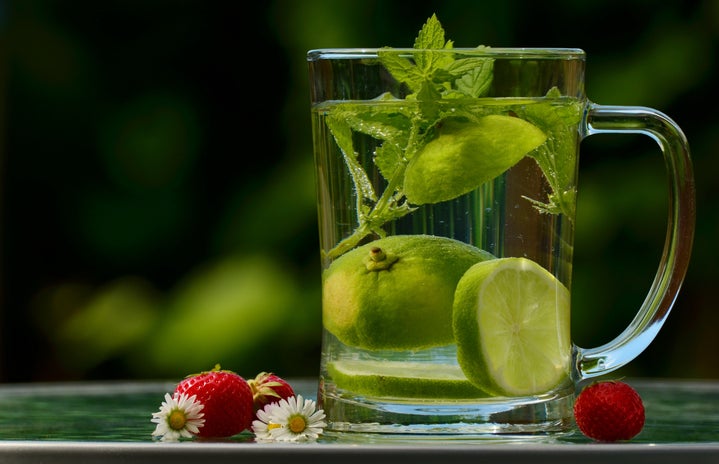The newest food fad is all about protein. Protein builds muscles and helps with weight loss!
At least that’s what magazines like Shape, Glamour, and Vogue claim.
Protein only boosts muscle growth if you work those muscles, that is, weight train. According to Heathline, individuals should hit the weights at least twice a week in order to see changes in muscle composition. Compound movements – where you work multiple parts of the body – are ideal for saving time and maximizing muscle growth. Examples include holding dumbbells at shoulder height and squatting low (make sure your knees aren’t going over your toes) and then pressing the dumbbells up over your head to work the shoulders as you return to a standing position.
If it’s your first time weight training, I recommend you check out some videos like PopSugar fitness or Shape. It’s easy to get injured, but always remember to stand up straight (if you use weights that are too heavy your back will arch to compensate for the strain), suck in your core (as though trying to get your belly button to touch your spine), and breath. Easier said than done, yes!
Once you’ve started hitting the weights, the next question is – how much protein is too much protein? Generally, individuals should consume 0.8 grams of protein per kilogram of body weight. This varies depending on your activity level, gender, and age but it’s a good place to start. For example, a moderately active 130lb 20-year old female needs about 50 grams of protein a day. She should space it across meals, as opposed to eating it all in one sitting. Protein promotes helps satiety, that “fullness” feeling that can help prevent overeating throughout the day. Yet excess protein can lead to fat gain, so it’s best not to shove it all in at dinner before bedtime.
Next question, what protein should you eat?
Contrary to popular belief, vegans and vegitarians can get plenty of protein without animal products. Legumes (i.e., peanut butter) is a favorite option, but be wary of the calorie content if you’re trying to lose weight! Same for protein bars. Lara Bars? The Chocolate Peanut Butter Cup flavor packs only 11g of protein in for 230 calories. In contrast, ThinkThin high protein bars have 20g of protein for the same calorie content. The company also offers bars lighter in calories (150) with half the protein. Granted, this all depends on your financial constraints, taste preferences, and your tolerance for processed foods.
Other protein options include Greek yogurt, edamame, chickpeas, cheese and hard-boiled eggs. Again, be sure to take the calorie to sugar to protein ratio into account. Dannon Light & Fit (80 calories, 15g of protein) and Siggi’s (120 calories, 15g of protein) are better Greek yogurt choices compared to Chobani Flips (230 calories, 12g of protein, and 22g of sugar). With yogurt, Greek is better because it packs more protein per punch, and nonfat milk is better, because whole milk options are higher in fat.
Now, this doesn’t mean you need to eat flavorless chicken breasts from the FFC for the rest of your college career. There are plenty of high-protein, tasty treats to buy and make – just check out Pinterest! If there’s one thing you take away from this post, it’s pay attention to the nutrition label. Always size up the amount of protein offered, calories, and sugar. Why eat a yogurt with 22g of sugar when you can have a way better cookie for the same? Be nutrition label smart, hit the gym once in a while, and you’ll be all set for hot girl summer – but keep in mind, weight is not how you should determine your health, and beauty is not determined by a scale or by body fat content. Workout and eat to feel good.


